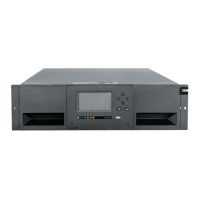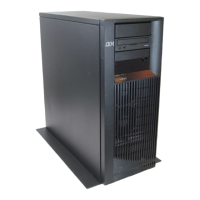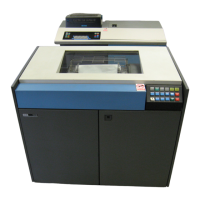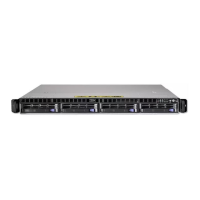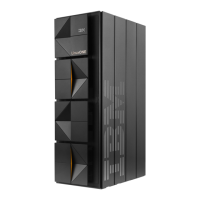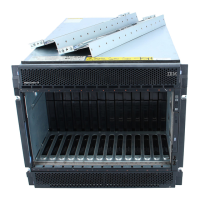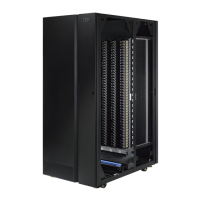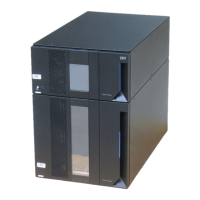Fibre Channel interface
Fibre Channel allows for an active intelligent interconnection scheme, called a Fabric, to connect devices.
Everything between the ports on Fibre Channel is called the Fabric. The Fabric is most often a switch or
series of switches that takes the responsibility for routing.
The library allows the selection of the following Fibre channel port behaviors:
v LN Port: (default setting) - an automatic configuration that tries arbitrated loop first, then switched
fabric
v L Port - arbitrated loop
v N Port - point to point protocol in a switched fabric topology
Cables and speeds
Ultrium Fibre Channel tape drives use LC duplex fiber optics cables.
The maximum distances that the library supports on a Fibre Channel link is determined by the link
speed, the type of fiber (50-micron or 62.5-micron), and the device to which the library is attached.
If the library attaches to an HBA (Host Bus adapter), refer to the distances that are supported by the
HBA. If the library attaches to a switch, the supported distances are:
v For a multi-mode 50-micron cable:
– 1-Gbit link speed = up to 500 m (1640 ft)
– 2-Gbit link speed = up to 300 m (984 ft)
– 4-Gbit link speed = up to 175 m (574 ft)
– 8-Gbit link speed = up to 150 m (492 ft)
v For a multi-mode 62.5-micron cable:
– 1-Gbit link speed = up to 300 m (984 ft)
– 2-Gbit link speed = up to 90 m (295 ft)
– 4-Gbit link speed = up to 50 m (164 ft)
– 8-Gbit link speed = up to 21 m (68 ft)
Note: Minimum distance for both 50 micron and 62.5 micron is 2 m (6 ft).
Zoning to isolate devices and enhance security
For security reasons, it is important to limit the devices that a server or servers can recognize or access.
Also, some performance configurations and SAN configurations result in a device seen multiple times
from the same server. For example, if you have two HBAs from the same server that is connected to an
Ultrium Tape Drive in the library, the drive is detected and displays as two logical devices. There are two
special files for one physical device. Zoning addresses these issues.
You can partition your SAN into logical groupings of devices so that each group is isolated from the
other and can access only the devices in its own group with zoning. Two types of zoning exist: hardware
zoning and software zoning. Hardware zoning is based on physical fabric port number. Software zoning
is defined with a worldwide node name (WWNN) or worldwide port name (WWPN). While zoning can
be reconfigured without causing an outage, some zoning configurations can become complicated. The
advantage of the library's WWNN implementation is that you can avoid the exposure of introducing
zoning errors because you do not have to change the zoning configuration if a drive needs service or
replacement.
Attention: It is recommended that tape storage devices are connected on a separate HBA from disk
storage devices to avoid potential configuration incompatibilities.
36 IBM TS3100 Tape Library and TS3200 Tape Library: Setup, Operator, and Service Guide Machine Type 3573
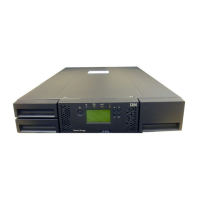
